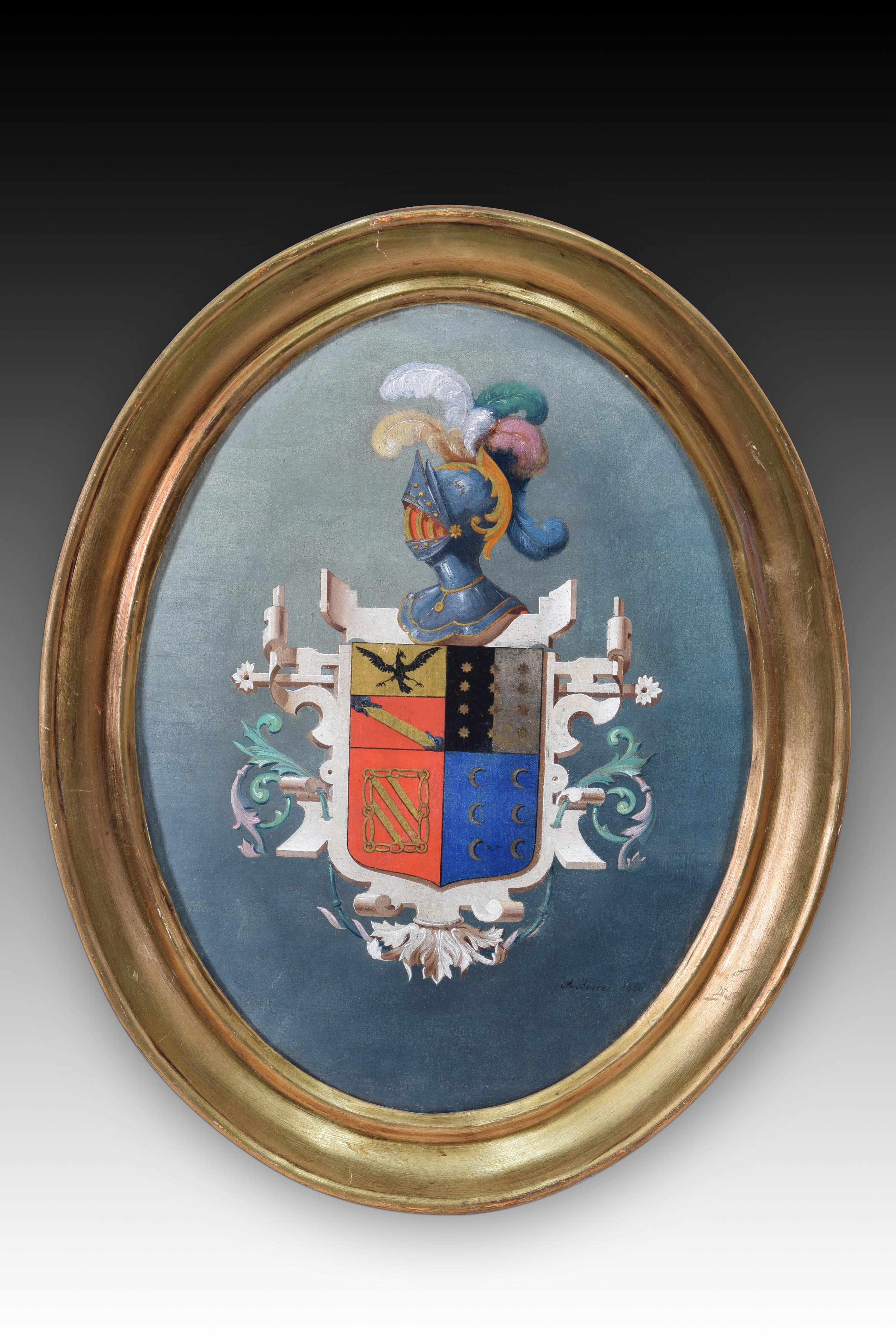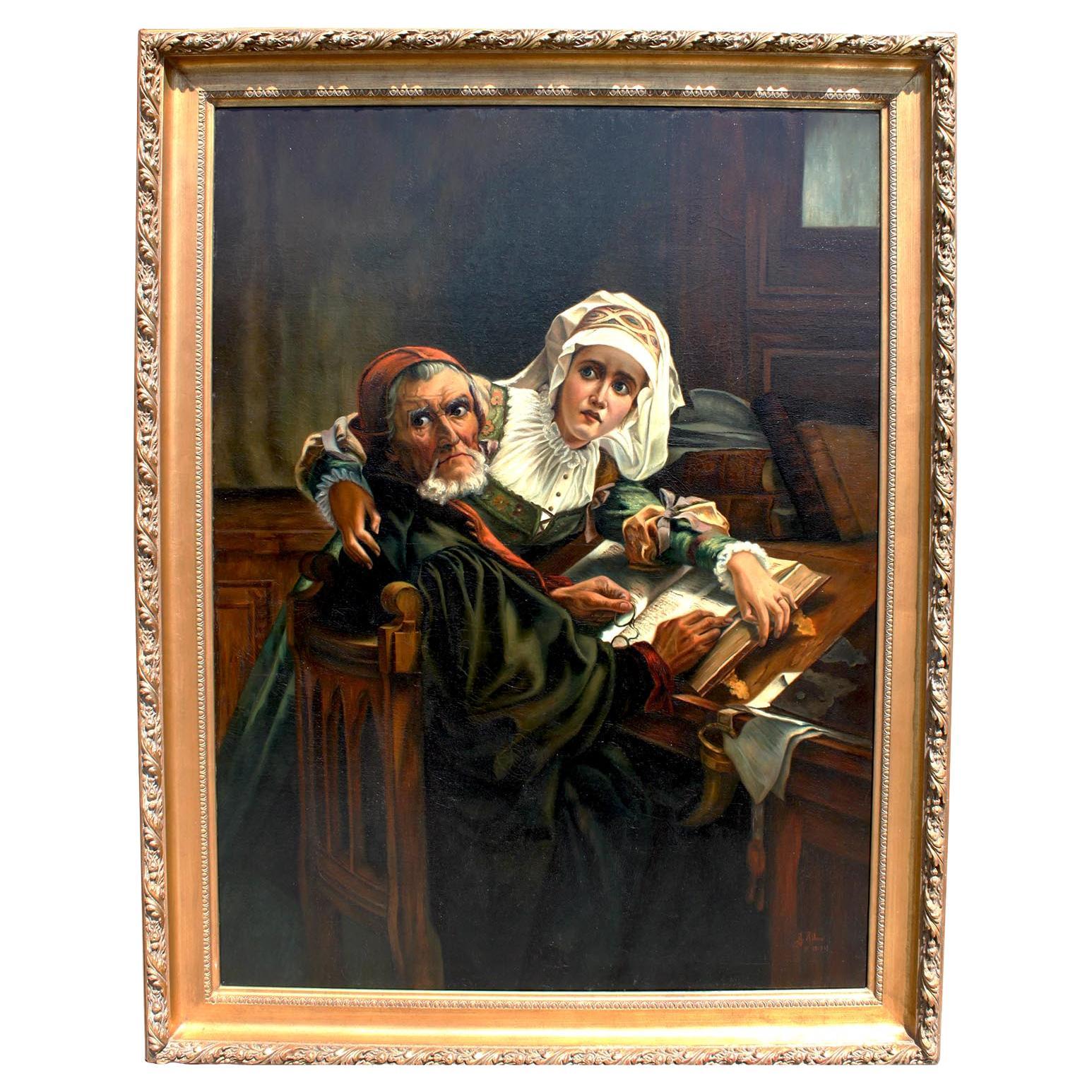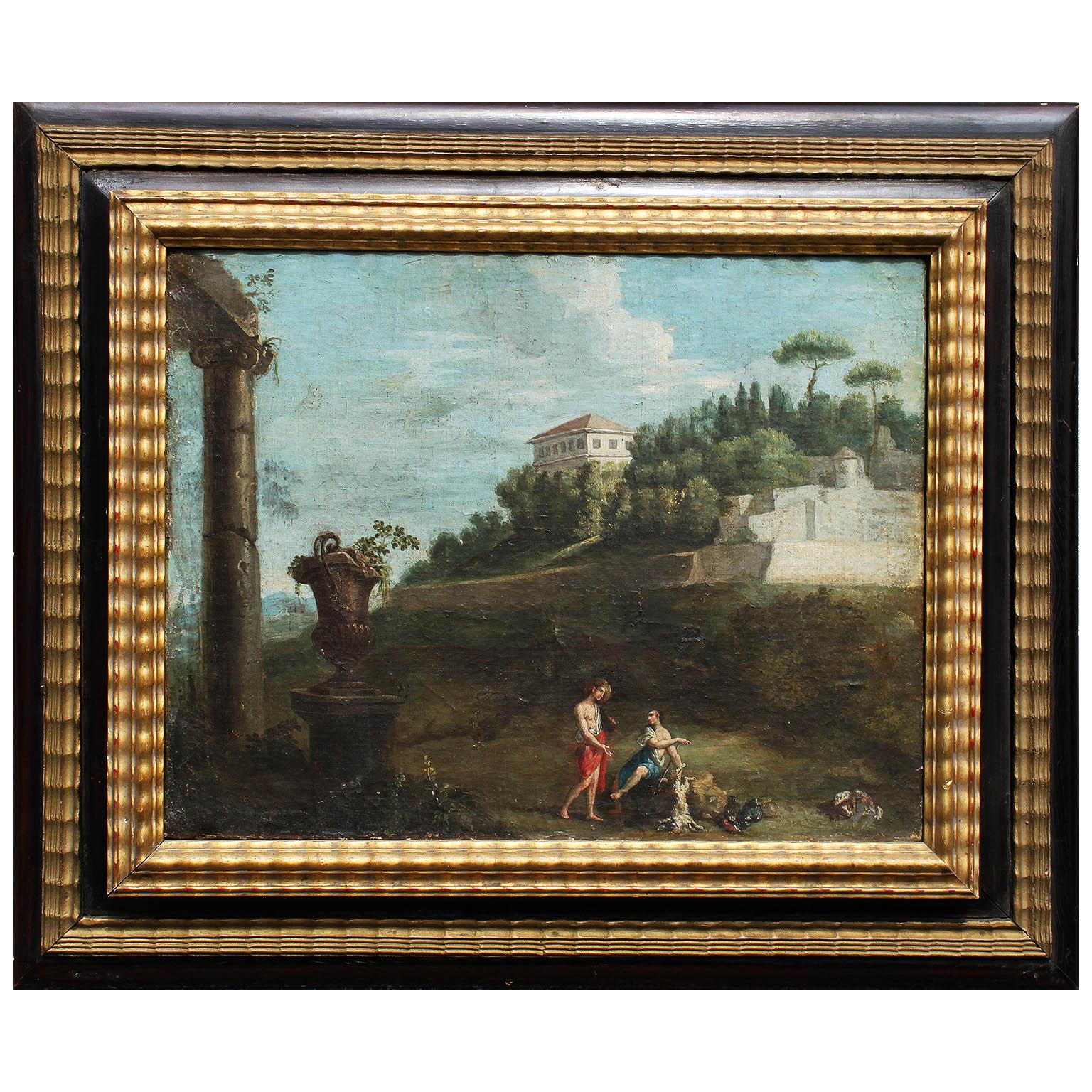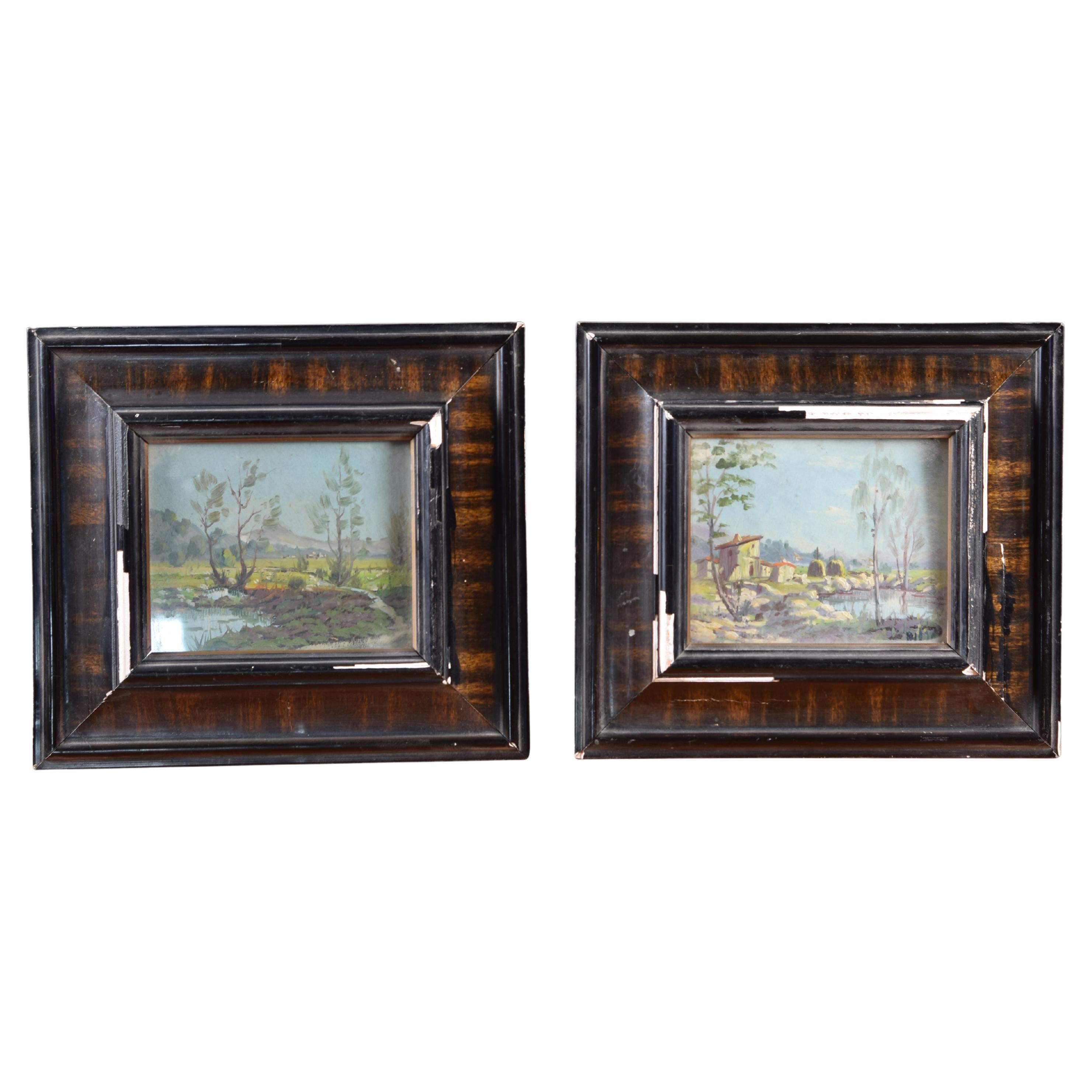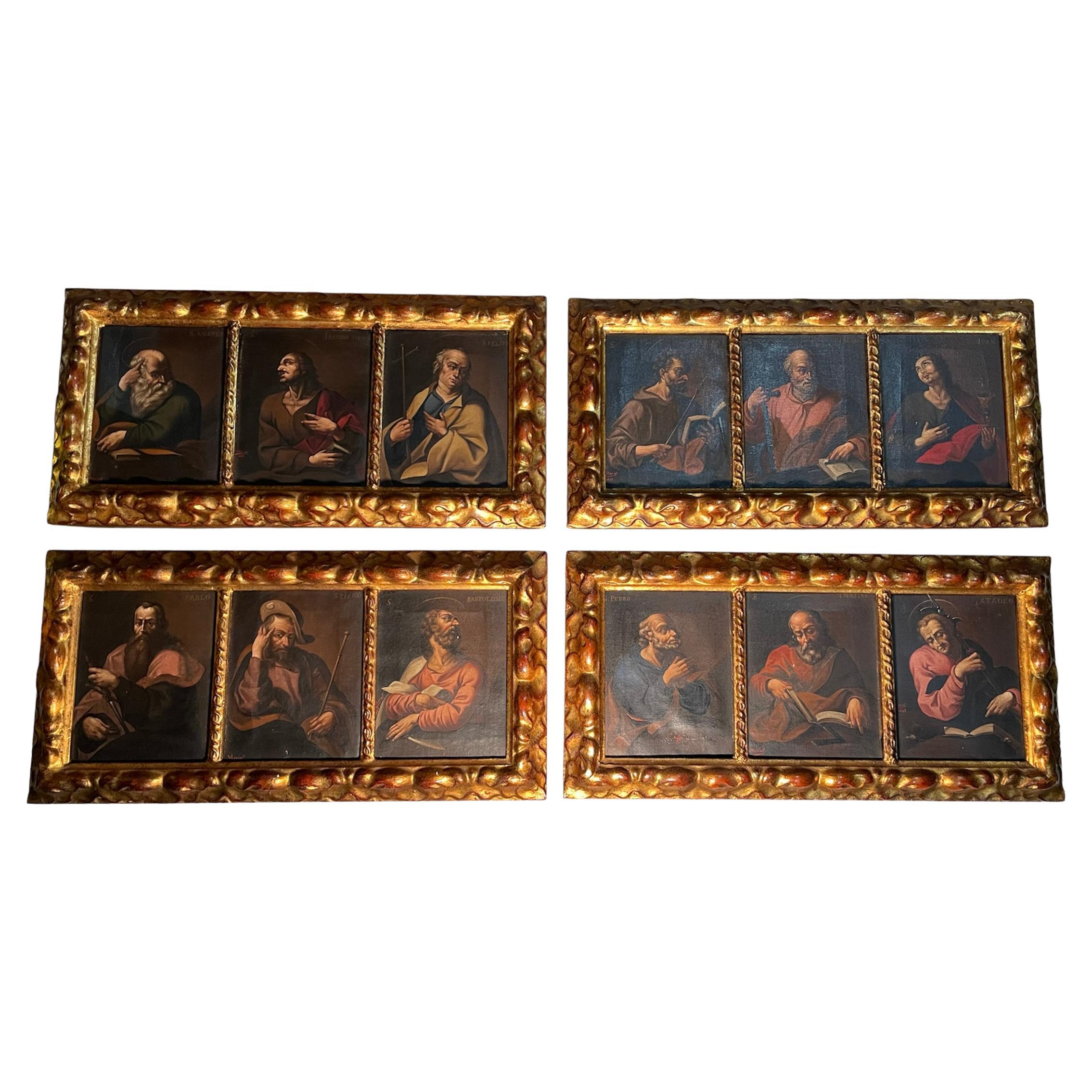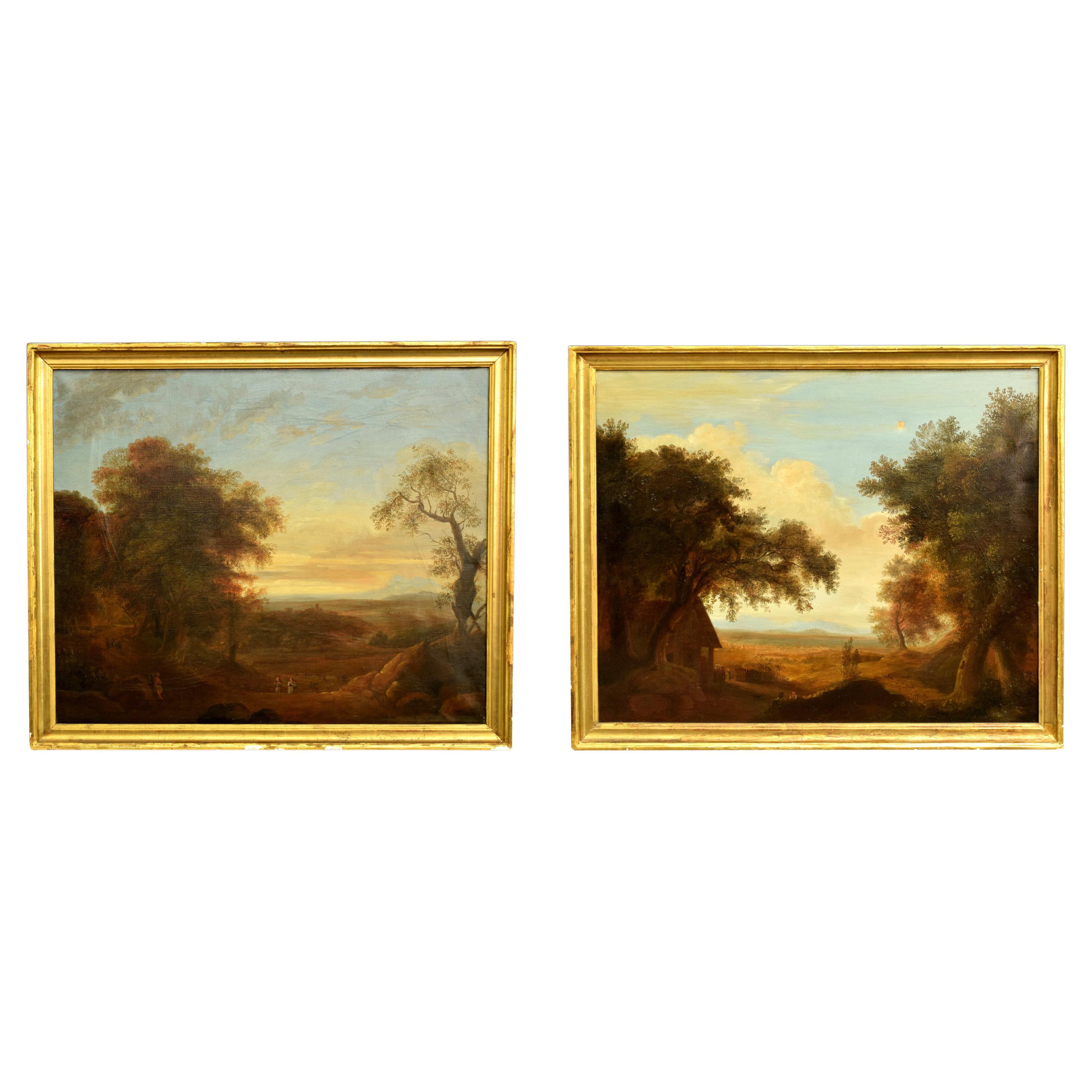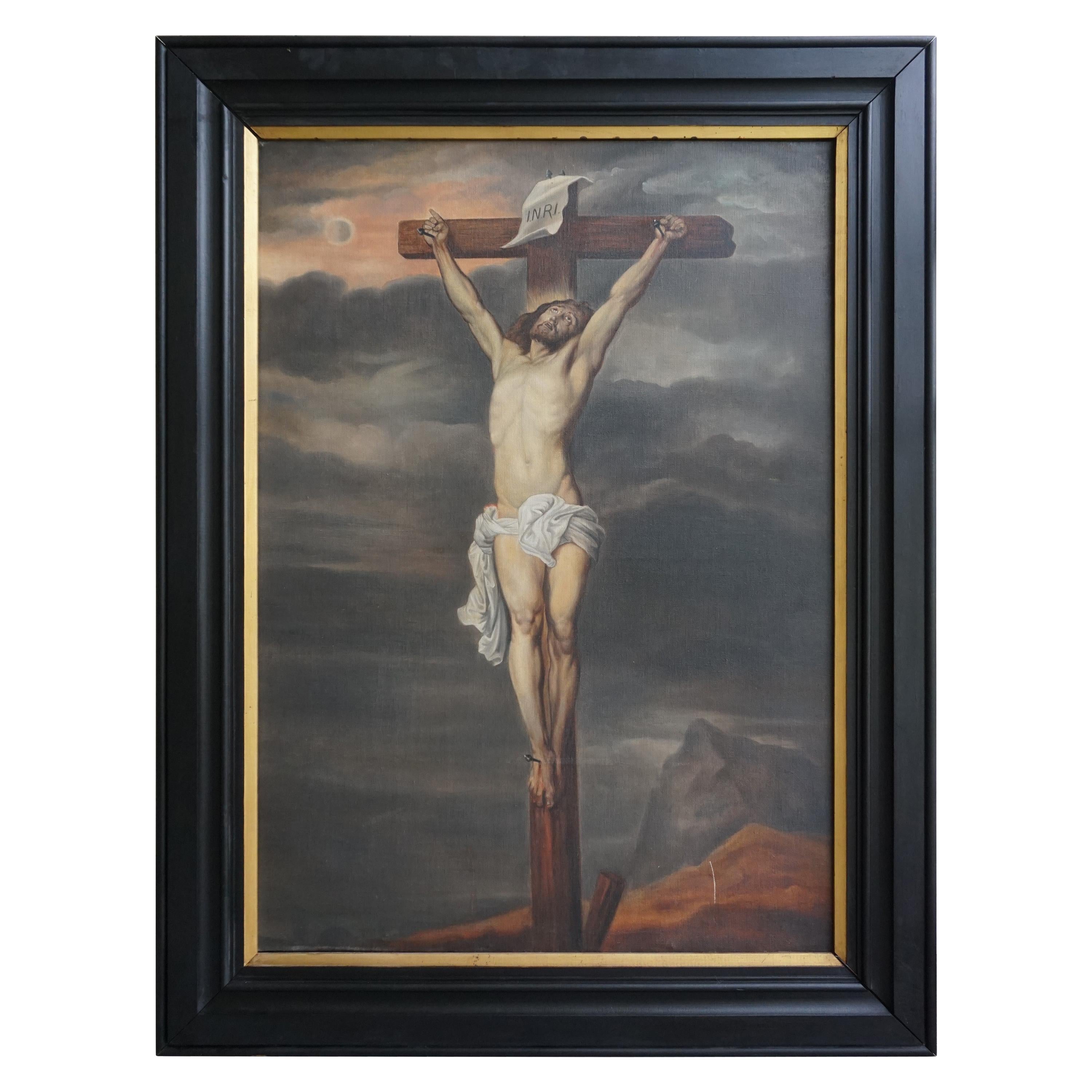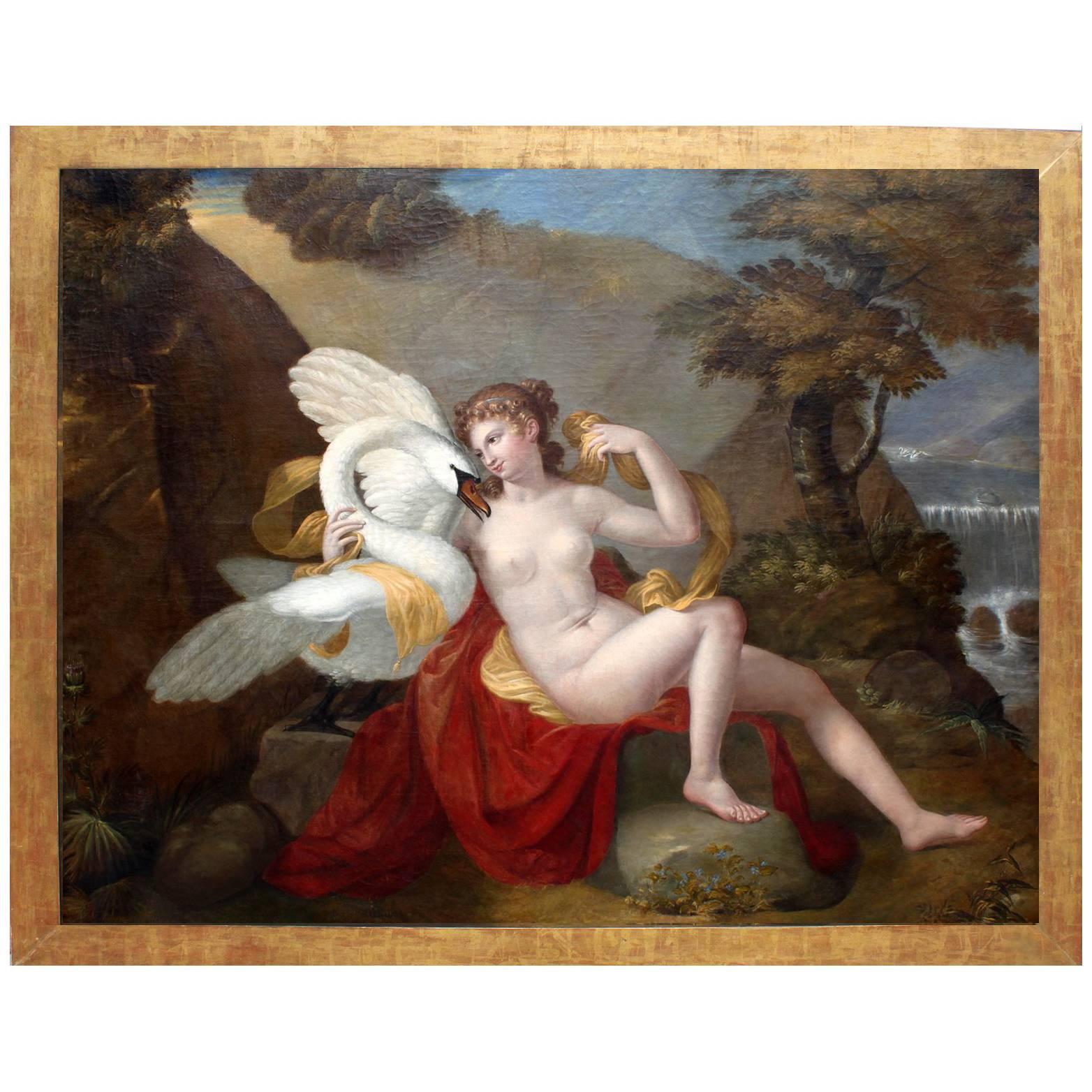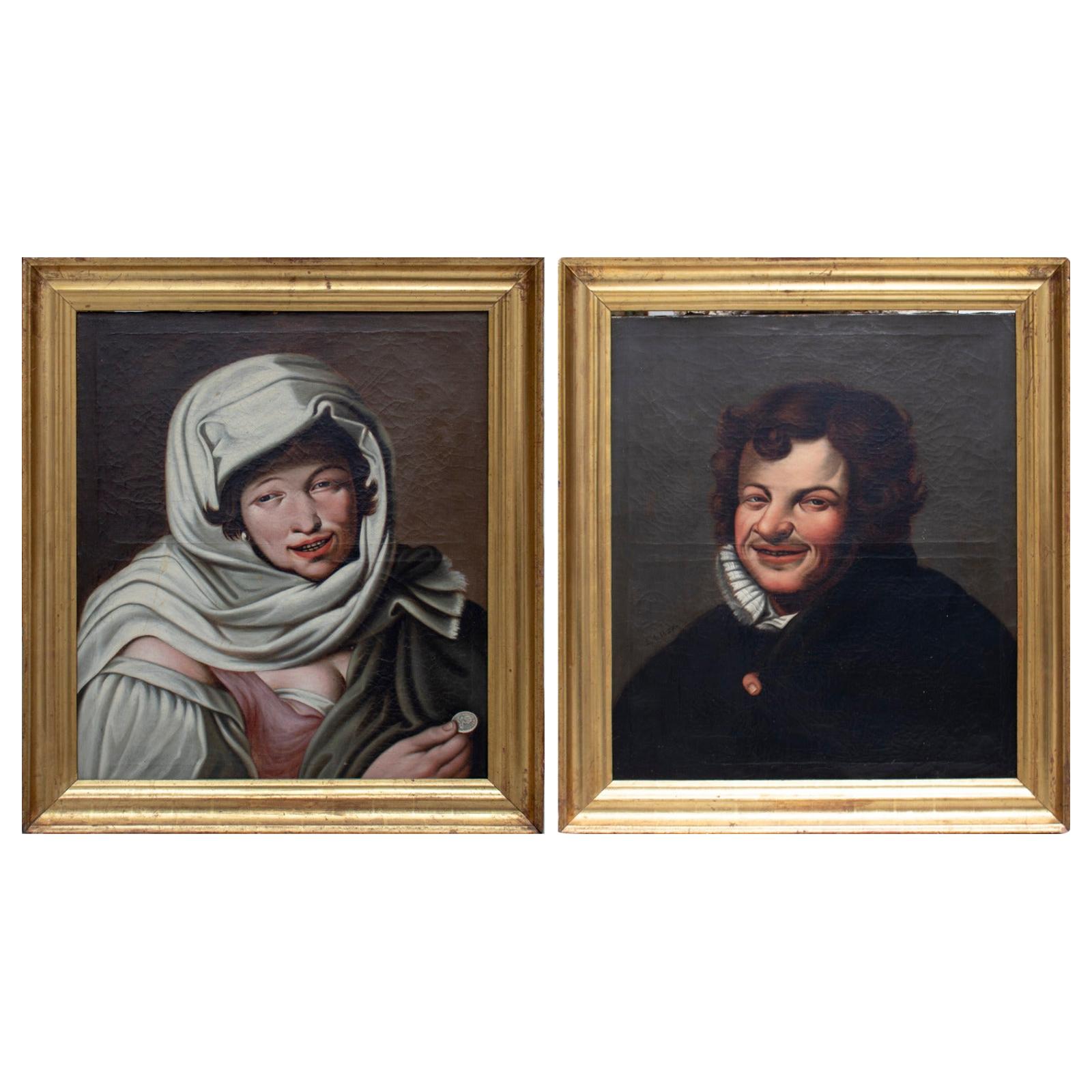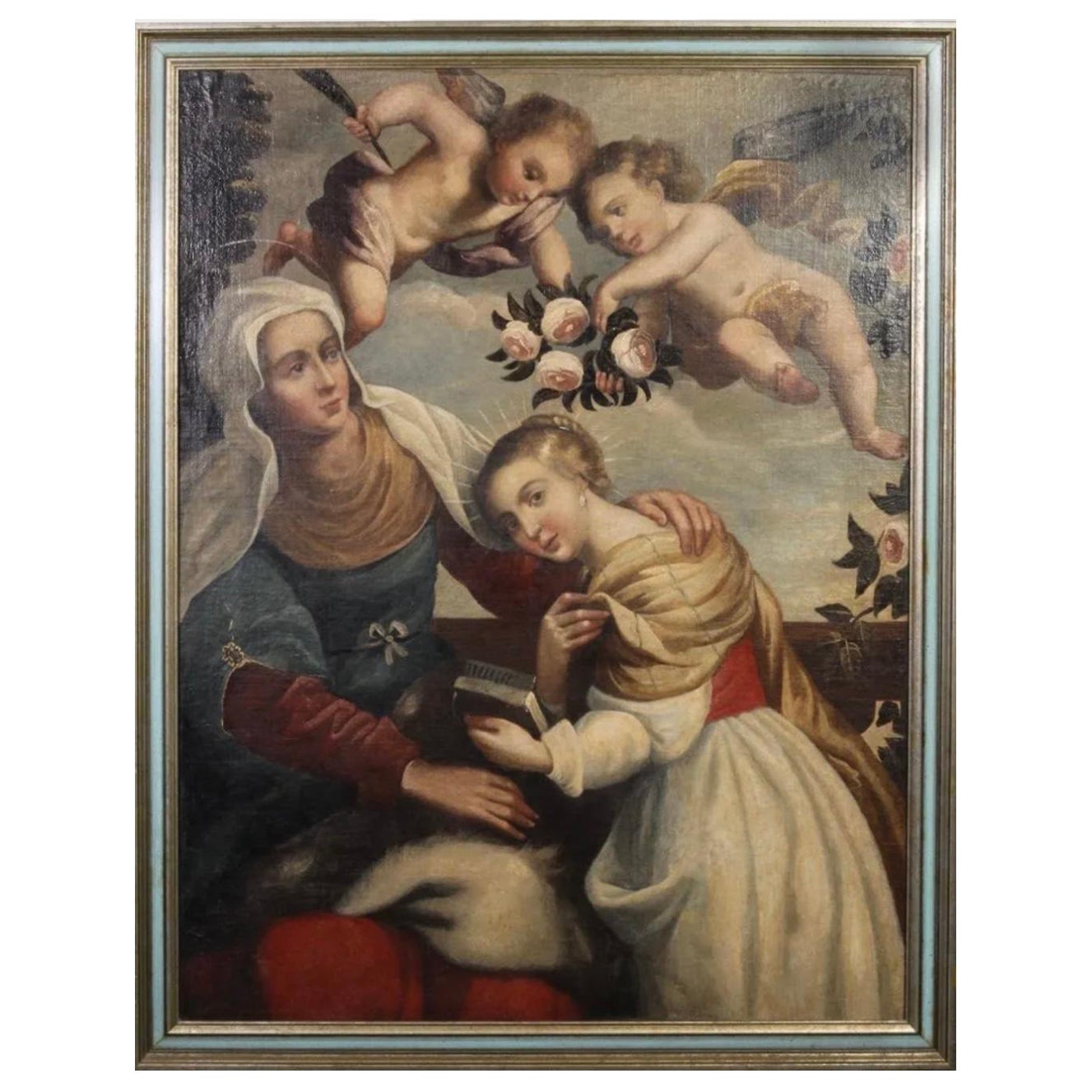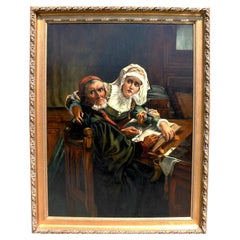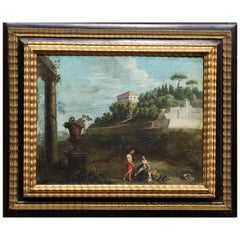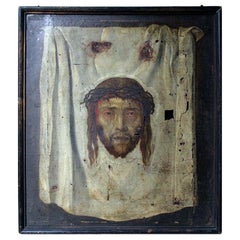
After Fetti, the Veil of Veronica, Spanish School Oil on Canvas
View Similar Items
1 of 20
After Fetti, the Veil of Veronica, Spanish School Oil on Canvas
About the Item
- Dimensions:Height: 26 in (66.04 cm)Width: 22.25 in (56.52 cm)Depth: 1.25 in (3.18 cm)
- Style:Renaissance Revival (Of the Period)
- Materials and Techniques:
- Place of Origin:
- Period:
- Date of Manufacture:circa 1700-1725
- Condition:Wear consistent with age and use. Minor losses. Minor structural damages. Minor fading.
- Seller Location:Bedford, GB
- Reference Number:Seller: 22111stDibs: LU1944319681702
You May Also Like
- Heraldic Shield, Oil on Canvas, Torres, a. Spanish School, 1856Located in Madrid, ESHeraldic shield. Oil on canvas. TORRES, A. Spanish school, 1856. Signed and dated. This work shows a heraldic shield on a blue background with different tones, in an oval and fra...Category
Antique 1850s Spanish Neoclassical Revival Paintings
MaterialsOther
- Oil on Canvas "the Prohibited Reading" After Karel OomsLocated in Los Angeles, CAA Large Continental Oil on Canvas "The Prohibited Reading " after Karel Ooms (Belgium, 1845-1900). This beautiful executed painting depicts a historical scene of an old man and a young woman who are huddled over a bible. The pair is gazing in apparent concern or alarm, over the old man's shoulder, towards something outside of the picture. The scene is likely set in the 16th or 17th century when Protestants were prosecuted, amongst others, for reading the bible in the vernacular, a practice prohibited by the Catholic Church at the time. Signed (l/r) A. Ribas 15-12-913. Within a giltwood carved frame. circa: Probably Belgium, 1913. Karel Ooms was born in Dessel on January 27, 1845 as the youngest son of a large peasant family. At school his extraordinary talent for drawing was discovered. When he was twelve his hometown provided financial support which allowed him to study at the Antwerp Academy of fine Arts. One of his teachers at the Academy was Nicaise de Keyser, one of the key figures in the Belgian Romantic-historical school of painting and a painter of mainly history paintings and portraits. After graduating from the Academy 1865 Karel Ooms was welcomed with pomp in his home town Dessel. He painted two altarpieces for the local church Saint Nicolas, to express his gratitude to his city. Karel Ooms settled as an independent artist in Antwerp around 1871. He quickly established a reputation as a portrait painter. In addition, he received commissions for religious paintings and history paintings. He gained particular recognition with two large paintings...Category
Early 20th Century Belgian Renaissance Revival Paintings
MaterialsCanvas, Giltwood
- After Pieter van Bloemen Oil on Canvas Hunting & Ruins SceneLocated in Los Angeles, CASchool of Pieter van Bloemen (Flemish, 1657-1720) oil on Canvas "Hunting & Ruins Scene". The capriccio scene depicting two male hunters in robes, on...Category
Antique 19th Century Belgian Renaissance Revival Paintings
MaterialsCanvas, Wood, Giltwood
$5,850 Sale Price38% Off - Couple of landscapes. Oil on canvas. Spanish school (BILSO), 20th century.Located in Madrid, ESCouple of landscapes. Oil on canvas. Spanish school (BILSO), 20th century. Signed in the lower corners. Pair of landscapes or notes of rural landscapes with trees, mountains and bu...Category
20th Century Spanish Other Paintings
MaterialsOther
- Set of Four Triptychs Oil Paintings on Canvas of the Twelve ApostlesLocated in Guaynabo, PRThese are a set of Four “triptychs” oil paintings on canvas of the twelve apostles. Each one of the “triptychs” are rectangular shaped, divided i...Category
Antique 19th Century Spanish Renaissance Revival Paintings
MaterialsWood
- "Wedding of Tethys and Peleus", Oil on Canvas, School of Madrid, SpainLocated in Madrid, ES"Wedding of Tethys and Peleus". Oil on canvas. School of Madrid, 17th century. Corte, Juan de la (Antwerp, circa 1585 - Madrid, 1662) circle. This work describes the weddings of the Nereid Thetis and the prince Peleo, parents of Achilles. It was celebrated on Mount Pelion, and all the deities came, although Eris, the goddess of discord, was not invited. In revenge, she threw a golden apple in which she said "for the most beautiful", that caused the dispute between Athena, Aphrodite and Hera that led to the Trial of Paris, to finally bring about the Trojan War. The banquet is depicted with a composition worked in depth, located in a rich interior of classical architecture illuminated by the light of Apollo, which is situated at the far end of the viewer. At the head of the table, in the foreground, appears Zeus, accompanied by the eagle and Hera, queen of the gods, to his left. In the lower right corner we see a group of satyrs serving the wine, accompanied by rich metal vessels worked with a detailed and descriptive brushstroke. The rest of the gods appear clearly differentiated, with Athena in the foreground to the right and, following an agile rhythm in zigzag, typically baroque, Aphrodite with Eros, Hermes and the grooms, to the left, and to the right Poseidon. Formally it is a work perfectly framed within the 17th century school of Madrid, developed around the court. Thus, we see a sumptuous, allegorical classicist baroque, where the studies of light and color are especially relevant, revealing the exalted and luminous tone typical of this school's maturity. In particular, we can relate this painting to the circle of Juan de la Corte, painter of Flemish origin. We know nothing of his first formation today, for Palomino's assertion of his birth in Spain was documented, quoting in his testament that he was born in Antwerp. Also conserved documents in which the painter declares his apprenticeship in Flanders, where "it exerted his office by many years". For all this he has been associated with Flemish artists of the time who, due to personal knowledge or the study of his works, strongly influenced the configuration of his personal language. We know of his establishment in Spain at least since 1613. His work at the court encouraged him to ask for the place of royal painter who left vacant Bartolomé González...Category
Antique 17th Century Spanish Baroque Paintings
MaterialsCanvas
